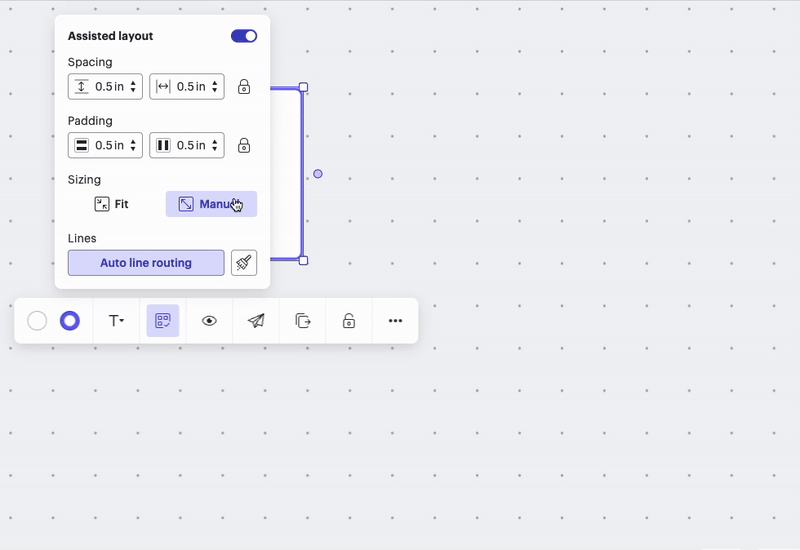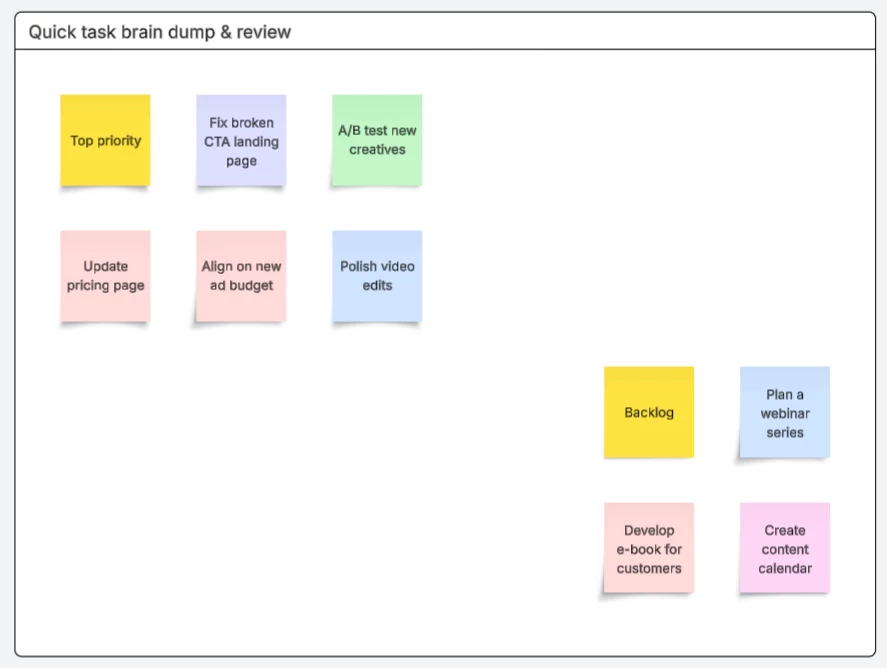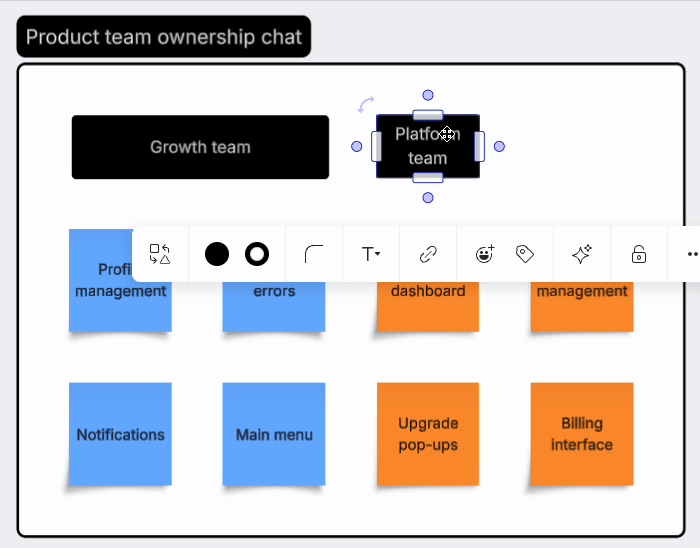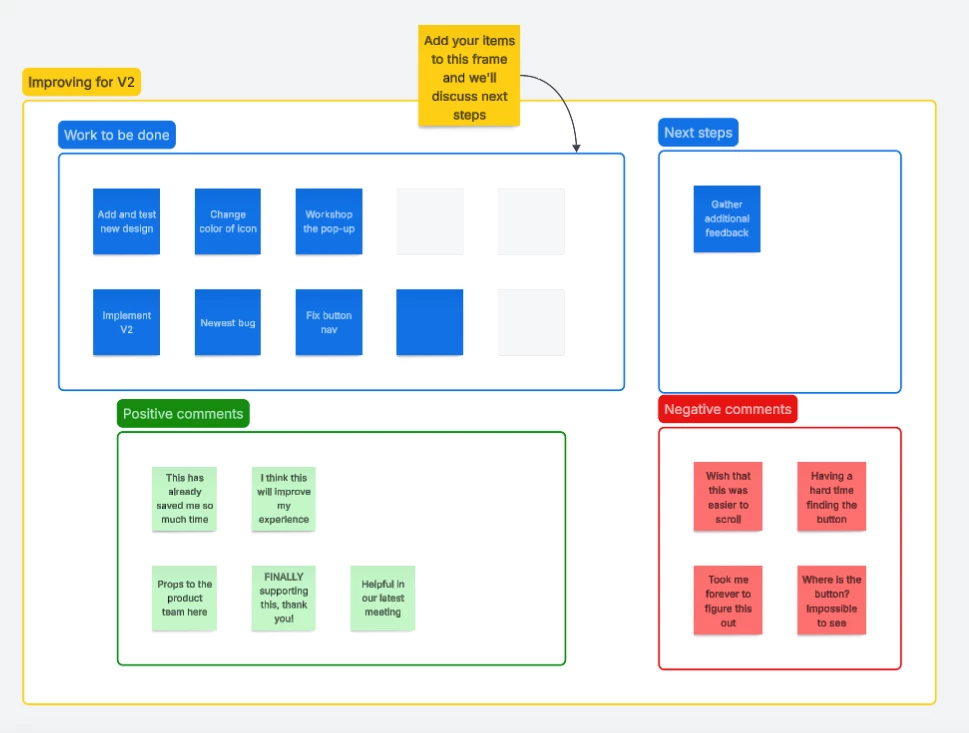Assisted layout helps to arrange content within Lucid organizers- including swimlanes, frames and all container types. This feature automatically aligns shapes to create a clean, presentable workspace.
Assisted layout is also available with AI-generated content, making brainstorming and board organization easy and efficient.
What’s new this Lately @ Lucid? Let’s take a look at some of the newest assisted layout features!
Resizable containers
You can now manually resize assisted layout containers and frames to make more room for your workflows and ideas.
You can choose between Fit or Manual in the assisted layout menu. By default, assisted layout containers are set to Manual, allowing you the flexibility to expand the size and shape of your frame. Switching to Fit will automatically resize your container as you add or remove shapes.

Added white space
Assisted layout now supports introducing intentional white space onto your canvas to help structure your content visually.
For example, a marketing team can quickly meet to brain-dump the tasks for a campaign. They then organize their thoughts and categorize tasks in a container with assisted layout applied. Now they have an organized and presentable container for their next meeting!

Cell spanning
Assisted layout now also allows for additional flexibility by letting shapes span between multiple rows or columns. No longer limited to one object per cell, cell spanning allows for more granular control.
For example, two teams might meet to iron out their respective duties. After jotting down areas of ownership, they organize everything into a frame and leverage cell spanning to create an organized and presentable view of ownership.

Nesting
Assisted layout now supports adding frames within assisted layout containers to create layered documents and additional organization.
For example, a product team may be collecting anecdotal user feedback in individual frames to help group positive and negative feedback together. As the team maps out multiple versions of their launch in a large board, they can stay organized by dragging in the relevant frames into their plans for version 2. You can nest assisted layout frames inside of other assisted layout frames for multiple levels of organization and hierarchy.

That’s a wrap on the latest assisted layout features!
If you missed the recent Lately @ Lucid webinar where these features were announced, catch the recordings here!
For more information, check out the Use assisted layout to organize content in Lucid article from the Lucid Help Center.
